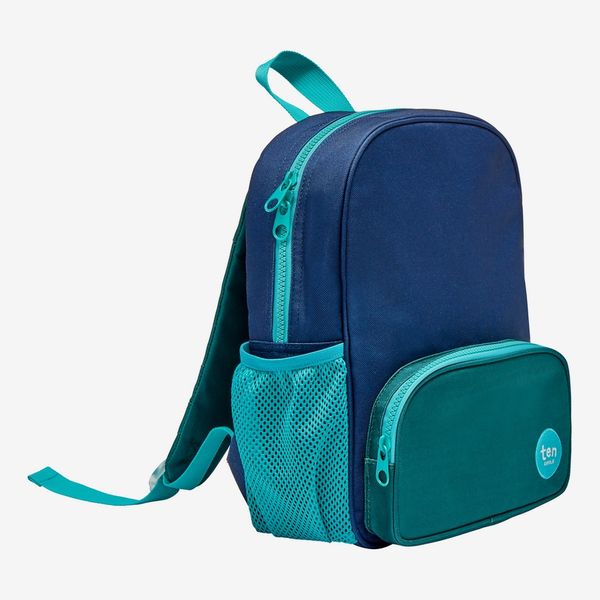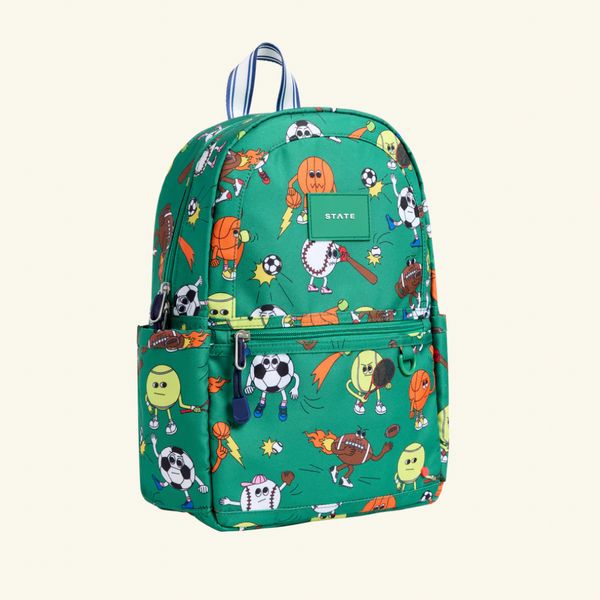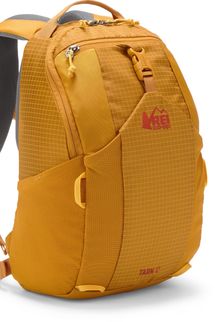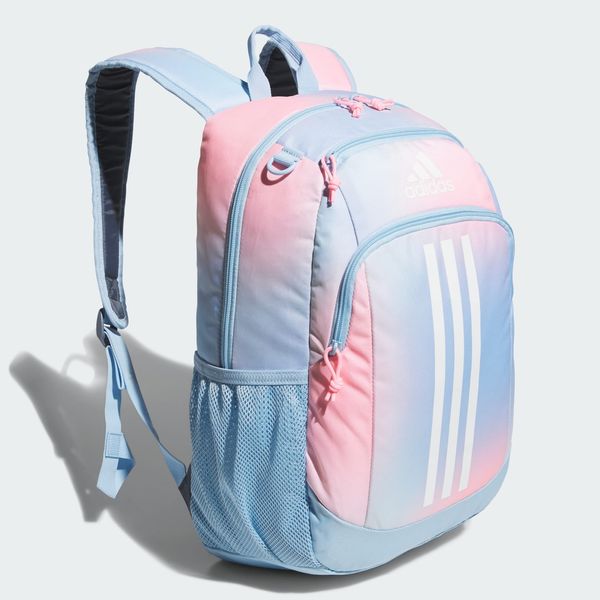
When my daughter, then 2, put on her backpack for her first day at preschool, I remember my awe that such tiny backpacks were even available. She was carrying her lunch, a beloved stuffed bunny, and a water bottle, which fit perfectly in the Kanken Mini backpack from Fjallraven. As she has grown, so have her backpacks — which, now that she’s a rising fourth-grader, also need to fit folders, books, lunch, snacks, and all the trinkets and notes she seems to collect at school.
If your kids are anything like mine, they do not handle their backpacks delicately. Their bags are stuffed into cubbies or lockers, discarded on the pavement at the playground after school, and promptly dropped on our entryway floor upon arrival at home. They absorb occasional lunch leaks, water-bottle spills, and crushed snacks, and get rained or snowed on at times. The best backpacks for kids are made of durable material that can withstand hard, daily wear and still last multiple school years. You’ll want to look for a sturdy zipper or cinching device that doesn’t catch on the fabric, with a wide opening so kids can quickly get their belongings in and out.
Most critically, backpacks should be the right size for your child’s torso and the amount of stuff they’ll be hauling back and forth. Appropriate sizing is a big part of ensuring comfort, along with features like the style of straps and a padded backing, which can be especially helpful for kids who carry a heavy load or need to schlep a laptop. To that end, I spoke to discerning curators, editors, designers, parents, and artists about the backpacks they love and recommend for kids of different ages. Their picks also consider style — from pack shape to patterns and colors. (At my kids’ elementary school, pickup happens in a big field outside the school where hundreds of parents flood in all at once, so I find that it’s also helpful to have a backpack with a distinct pattern or bright color to help me spot my kids amid the crowd.)
For toddlers through kindergarteners, we recommend a pack that holds around 12 liters or less, big enough to hold a lunch box, change of clothes, snacks, and water bottle, but not so big it’ll overwhelm them. For elementary-age kids, a pack that holds 15 to 18 liters can also accommodate folders and extra school supplies, and for middle- and high-schoolers, depending on your kid’s size and what they’re carrying day-to-day, a pack that holds 18 to 30 liters is appropriate. Many of the picks below, like those from State Bags, Pottery Barn, and L.L.Bean, come in a variety of sizes, holding increasingly more volume as kids grow. Regardless of size, make sure to adjust the straps of the backpack so that it sits at shoulder height, with the strap lengths symmetrical on both sides and no huge gaps between your kid’s back and the bag.
For preschool and kindergarten
“I am obsessed with the Japanese children’s line Ocean & Ground that does the absolute coolest color combos on this hyperfunctional backpack,” says Claire Mazur, co-creator of the A Thing or Two podcast and newsletter and Brooklyn-based parent of a 5-year-old. “It’s one of those lines that has nailed an aesthetic that has equal appeal for kids and adults,” she says of this company that’s lesser-known Stateside. But the packs don’t offer looks alone. “You can fit so much in them, and I love that there are two deep, external pockets for water bottles,” adds Mazur, in addition to a front zip pocket and main pouch with a wide opening.
Angela Silva, founder of homewares retailer Joinery, is just as passionate about her 4-year-old daughter’s Ocean & Ground backpack. “It’s important for kid backpacks to be superlight, and for some reason, none are. Not as light as this one, anyway,” she says. Another complaint she has it that so many kid backpacks are made of a plasticky fabric that gets holes in it. But this one is made of a softer and stronger nylon canvas — she says she’s washed it dozens of times and it still looks brand new. Ocean & Ground makes versions of this exact backpack in four different sizes from XS (4.5 liters) to L (17 liters); this is the size medium (10 liters).
Another great option for younger kids is Topo Designs’ Rover Mini Pack, which offers a cinch-style closure and clip top. “My kids used this backpack from preschool through early elementary, and it proved to be a perfect fit for all their needs,” says Courtney Klein, CEO of Storq, of this 10-liter pack made of recycled nylon. This smaller pack fits snuggly on shoulders with padded straps, and has a tablet sleeve and exterior front pocket. Plus, adds Klein, “Their vibrant color combos get kids excited enough to bypass a patterned pack,” speaking to the brand’s bold hues, contrast zippers, and straps.
After deciding that the corduroy backpack she liked from L.L.Bean would be a pain to clean, preschool teacher Kathleen Cann bought this one from Ten Little for her 2-year-old. She likes that its recycled-polyester fabric is Oeko-Tex certified and can easily be wiped down, and that the pack has a side pocket for a water bottle.
Cann also mentioned a few nonnegotiables. No. 1, make sure it fits. “I get so many students with huge packs. They look like turtles with enormous shells and they can’t navigate them very well,” she explains, adding that too-small backpacks are difficult for a different reason: Nothing fits in them. Cann suggests that a preschooler’s backpack should be big enough to fit lunch, water, and a folder or drawings (“I hate the mini Kanken for this reason,” she says). Ten Little’s backpack comes in two sizes that are 12 and 15 inches in height. Cann bought the smaller size, which is recommended by the brand for children from 2 to 5 years old depending on their height. It has two side pockets, an inner pocket for papers, and a small front pocket, which she says is good for stashing all the little toys that kids tend to sneak into the classroom.
As a teacher, Cann prefers solid colors or patterns over recognizable licensed characters; she notes that Elsa backpacks inevitably lead to Elsa-only play and/or competition around who has the Elsa backpack. Ten Little’s backpacks come in three color combinations and can be decorated with the brand’s weatherproof stickers (sold separately).
If your toddler is adamantly requesting a backpack covered in trucks, dinosaurs, or ballerinas, this backpack from Wildkin is a good affordable option. It and the matching insulated lunch bag come recommended by Gossamer founder David Weiner, who is the parent of an almost-3-year-old. “We went with the transportation pattern, but there’s a lot of other themes to choose from,” he says, and he likes that the mesh side pocket for a water bottle maximizes space so you don’t have to “cram everything into one big compartment.”
Mountain Equipment Company, or MEC, is a Canadian retailer for outdoor gear that’s similar to REI. The brand offers an 11-liter day pack with “a nice and narrow back that doesn’t make a kindergartener look like they’ll topple over,” says Ariel Brewster, managing editor at Harbour Publishing and Douglas & McIntyre and parent of a 6- and 10-year-old. The style has ample compartments and pockets and “still fits a water bottle, lunch, spare clothes, and a couple school supplies,” while being a manageable size for her rising first-grader. The pack has larger zipper pulls that allow for easy opening and closing, and padded back and shoulder straps, also making it comfortable to wear for nonschool adventures. (Older kids who need more space may also want to consider the brand’s 15-liter Eyas Daypack.)
L.L.Bean also offers a 17-liter Junior size of its classic backpack, good for preschoolers and kindergarteners or petite elementary-age kids. It’s the backpack that Strategist writer Lauren Ro bought for her son who is about to start kindergarten, and she loves that it’s a manageable size for a 5-year-old without being too small. Ro can pack it with a PlanetBox Rover lunch box with its matching bag, a small Hydroflask water bottle, snacks, and a change of clothes. “I love the classic styling and the fact that you can get it monogrammed. And I know it’s well made and durable,” she says. Klein, whose 8- and 10-year-old are on the smaller side, described how finding a backpack that’s the “right balance between storage space and size was a challenge.” Like Ro, she recommends the brand’s custom monogramming: “It’s a small detail that can make a big difference in the number of trips you make to the lost and found.”
For elementary school
“We have traveled many roads and lived through many school years with backpacks from State,” says Lexi Mainland, a writer and editor based in Brooklyn. “Both of my kids have had theirs for multiple years — through travel, school, and camp — and they hold up physically and aesthetically, ” she says of both the Kane Kids and Kane Kids Large styles. The bags are made with a weatherproof and slightly rigid recycled polyester that helps them hold their shape. “They manage to be structured and protective without losing the bit of slouch that is essential to looking cool,” says Mainland of how they wear when full. They come in an array of bold patterns and colors, from metallic and colorblock to animal, checkerboard, robots, and astronaut designs, and offer custom monogramming and “charm” patches that can be Velcroed directly onto the bags’ straps.
Mainland’s 6-year-old daughter, who is entering first grade, uses the Kane Kids size, and her son, who is 10 and entering fifth grade, has the Kane Kids Large. Mainland lauded State’s approach, which helps you find the right fit for your kid. “They let you know on each product page which school grades each backpack is appropriate for. It upgrades kids at fourth grade to the large size, knowing they’ll probably have more books and equipment. It’s such a helpful thing, but no other brand I’ve seen talks about grade level versus just size measurements,” explains Mainland. (There’s a Mini size for the preschool set, too.) Another detail that sets State apart: travel sleeves on many of its kids’ backpacks for ease of attaching the bags to the handle of a piece of rolling luggage.
Even though State’s bags are pricier than most other options, they do tend to sell out, especially in popular designs. Mainland recommends buying quickly if you see one you like and reassures “they really are that good,” for those who may be on the fence.
“The backpack that has truly stood the test of time is good ol’ L.L.Bean,” says Brewster. “My 9-year-old has had his current bag for years with no signs of wear.” The pack is made of weatherproof nylon, with an exterior water-bottle pocket on one side. “It’s actually big enough for his school folders, plus lunch bag, plus water bottle, and maybe even a towel and swimsuit or snow stuff, depending on the season,” says Brewster of the 24-liter pack, which also has front pockets with a key clip, organizer panel, and smaller interior slots for little treasures. L.L.Bean offers this size in solid colors, as well as in a variety of prints.
Swedish brand Fjallraven, whose signature Kanken-style backpacks have become popular in the U.S. in recent years (and have been a staple of schoolchildren in Sweden since the late ’70s), offers a variety of small-to-mid-size packs that are notable for their durability. The Samlaren Kanken 2B is a slightly larger version of the Kanken bag, with bonus pockets on the front that my kids love to stuff little treasures into. Despite the appearances of thinner straps compared to most other backpacks, Fjallraven’s backpacks are comfortable even for longer wear, with a proprietary weather-resistant material, Vinylon F, that repels moisture and dirt and softens and becomes more pliable with more wear.
While not explicitly designed for kids, Patagonia’s Atom Tote Pack is a sturdy, weatherproof mid-size backpack that my elementary-age kids find very comfortable with enough space to hold their folders, lunch, and snacks. It contains a removable padded laptop sleeve and has both interior and exterior pockets to secure smaller items. With two exterior-side water-bottle holders, this has also been a great backpack to take on hikes or day trips.
My 6-year-old carried the 12-liter size of this REI backpack, then upgraded to the 18-liter size, which is perfect for younger elementary-age kids. It has two generously sized mesh side pockets, handy for carrying a water bottle (or two), along with a smaller exterior zip pocket for small items and a larger clip pocket that is big enough to stuff a towel, raincoat, or sweatshirt into. The recycled ripstop nylon is water-resistant, and the dark-red and indigo-blue colorways are both good at hiding heavy wear. This pack can also be used as a day pack for hiking and has handy zippered mini-pockets in its hip belts, which admittedly don’t get used much for school but are a feature my kid found very fun.
If your kid has a strong affinity for anything from tie-dye rainbows, soccer, and space to Minecraft and Disney princesses, we’ve heard praise for Pottery Barn’s popular Mackenzie line of bags from both parents and kids, year after year. The collection features patterned backpacks in six sizes and styles: mini through extra-large, plus rolling and adaptive. “We went for mermaids and Lego,” says Mollie Chen, operating partner at Acora and co-founder of Birchbox, of the small-size packs her preschooler and kindergartner toted around on a trip to Europe. She described the bags as big enough for a folder, with tons of compartments for art supplies and other treasures, but not so big they tip over. The packs can be personalized with monogramming and also include an exterior water-bottle pocket on one side. Compared to other brands, there are more exterior pockets and clasps, which offer more adjustability, and can be useful for hooking on a bike helmet or strapping the pack to a suitcase. The full MacKenzie collection also features coordinating lunch bags, water bottles, pencil cases, and more.
For middle and high school
Strategist senior writer Liza Corsillo says her niece, who is going into fifth grade, chose this tie-dye Adidas backpack over a more classic solid-color Herschel backpack because it weighs less and has more pockets for all of her stuff. Plus it’ll stand out among her classmates’ bags, making it harder to misplace. There are two mesh side pockets, two front zipper pockets, and an inner laptop sleeve.
“I look for a simple utilitarian style, and JanSport is a real classic,” says Lena Corwin, founder of Peace Cloth and a San Francisco–based mom of two, of JanSport’s 26-liter Superbreak style. Her 13-year-old has the Superbreak Plus, with a spacious main compartment, interior laptop sleeve, and padded shoulder straps. “I’ve found them to be workhorses,” says Corwin, “and there are never any broken zippers.” The Superbreak Plus comes in dozens of solid shades in every color of the rainbow, plus a few prints like “space dust,” “rad plaid navy,” and “embroidered fruit.”
Another pack from Topo with both a spacious interior and streamlined silhouette is the brand’s Daypack Classic, which is better suited for tweens and teens at 21.6 liters. Like other Topo packs, the style is offered in a range of the brand’s signature contrast colorways and has an interior laptop sleeve, plus two exterior water-bottle holders. The wide zipper top to the main compartment and spacious front pocket make it easy to get folders and books in and out of the bag, though this style has fewer internal compartments than some of the other backpacks on this list.
For teens and tweens who want a highly utilitarian, bigger bag, Rion Nakaya, founder of The Kid Should See This, recommends the Herschel Classic XL. It’s a spacious 30-liter bag with a laptop sleeve big enough for a 15-inch laptop, and it comes in a variety of solid colors, plus a handful of patterns like leopard and camo. “They are well made, roomy, and super sturdy. After a year of use, it still looks new,” she said of the backpack she got for her then-15-year-old. “We also have a Herschel Little America backpack that’s been excellent after a decade of work use,” she added, speaking to the brand’s extreme durability.
The Strategist is designed to surface the most useful, expert recommendations for things to buy across the vast e-commerce landscape. Some of our latest conquests include the best acne treatments, rolling luggage, pillows for side sleepers, natural anxiety remedies, and bath towels. We update links when possible, but note that deals can expire and all prices are subject to change.



























